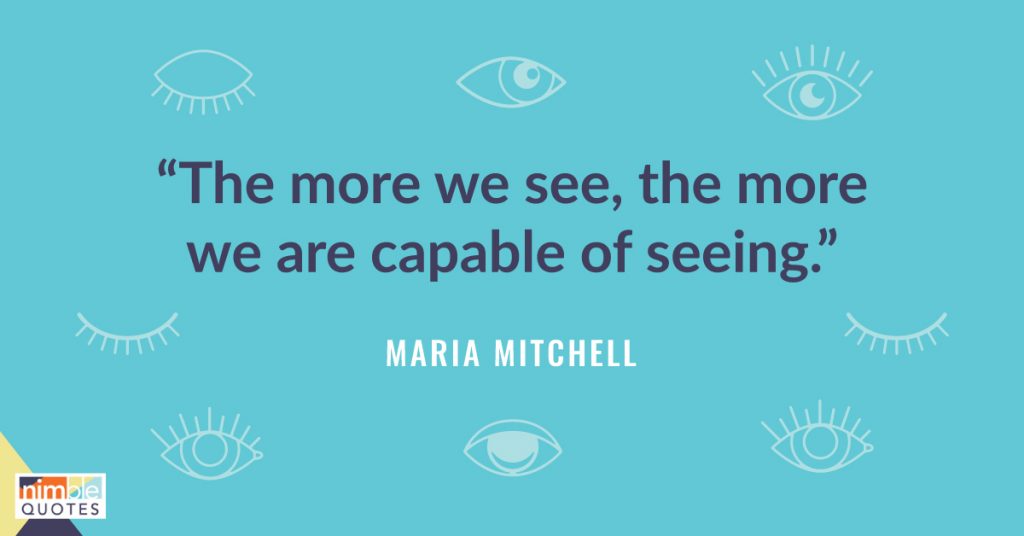A woman’s pursuit to reach for the stars
For centuries the night sky has captured humanity’s collective curiosity, however, despite its pursuit to understand the universe and what lay beyond our imagination, the field of astronomy has largely the purview of men.
That began to change in the mid 19th century, thanks to Maria Mitchell, an American astronomer, librarian, educator and perhaps most importantly, a trailblazer for women’s rights. Born in 1818, in the small seaside town of Nantucket, Massachusetts, Mitchell was one of 10 children in her family. As a Quaker family, her mother and father strongly valued education and believed that girls were entitled to the same education as boys.
While this attitude was rare at the time, her father made sure Mitchell and all of her siblings were taught about nature and astronomy, while her mother’s employment at two libraries ensured they had more than enough books to support their education. At a young age, Mitchell showed an early interest in astronomy and advanced mathematics. To encourage her to pursue her passion, her father taught her to operate a number of astronomical instruments including chronometers, sextants and simple refracting telescopes. Mitchell also regularly helped her father observe the night sky for local seamen.
After attending an all-girls school until she was 16, Mitchell went on to open her own school, where she developed experimental teaching methods to help her students succeed. During her time at the school she made the decision to allow nonwhite children to attend her school, a move that was extremely controversial at the time because the local public school in her community was still segregated.
Following her career as a school educator and administrator, Mitchell began working as the first librarian of the Nantucket Atheneum in 1836 and held the position for 20 years.The institution’s limited operating hours enabled her to assist her father with a series of astronomical observations and geographical calculations for the U.S. Coast Survey and to continue her own education.
During this time, Mitchell and her father worked in a small observatory constructed on the roof of a bank building with a four-inch equatorial telescope provided by the U.S. government. In addition to looking for nebulae and double stars, the pair produced latitudes and longitudes by calculating the altitudes of stars and the moon.
After years of observations, on October 1, 1847 she made a career-changing discovery when she discovered Comet 1847 VI, which would later be called “Miss Mitchell’s Comet.” She discovered the comet after she began to notice an unknown object flying through the sky in an area where she previously had seen any other activity.
Excited by her potential discovery, but aware of society’s views about women, Mitchell published a notice of her discovery in Silliman’s Journal in January 1848 under her father’s name. The following month, she submitted more details about her calculation of the comet’s orbit and made sure to use her name as the original discoverer.
Fast forward two years later and in 1848, Mitchell was awarded a gold medal prize for her discovery by King Christian VIII of Denmark. Soon after her discovery and award, Mitchell became a celebrity with hundreds of newspaper articles written about her in the subsequent decade.A year later, in 1849, Mitchell accepted a computing position with the U.S. Coast Survey and was appointed professor of astronomy at Vassar College.
During her professorship, Mitchell also edited the astronomical column of Scientific American and became the first woman elected Fellow of the American Academy of Arts and Sciences. She also joined the American Association for the Advancement of Science in 1850 and befriended many of its members, including the director of the Smithsonian Institution, Joseph Henry.
While Mitchell passed away in 1889, her discovery and subsequent work as a female astronomer firmly cemented her place in American history, and helped inspire generations of women to pursue a career in science for centuries to come.
“We especially need imagination in science. It is not all mathematics, nor all logic, but it is somewhat beauty and poetry.”
Want to inspire others and be inspired by famous inspirational quotes? Sign up for a 7-day free trial of Nimble Quotes, choose from 60+ categories of quotes (success, financial, business, women’s quotes etc.) to appear on your Twitter feed as if you’ve tweeted them yourself. Try our SMS option too – get inspirational quotes sent to your phone each day – a text message you’ll love to receive!







